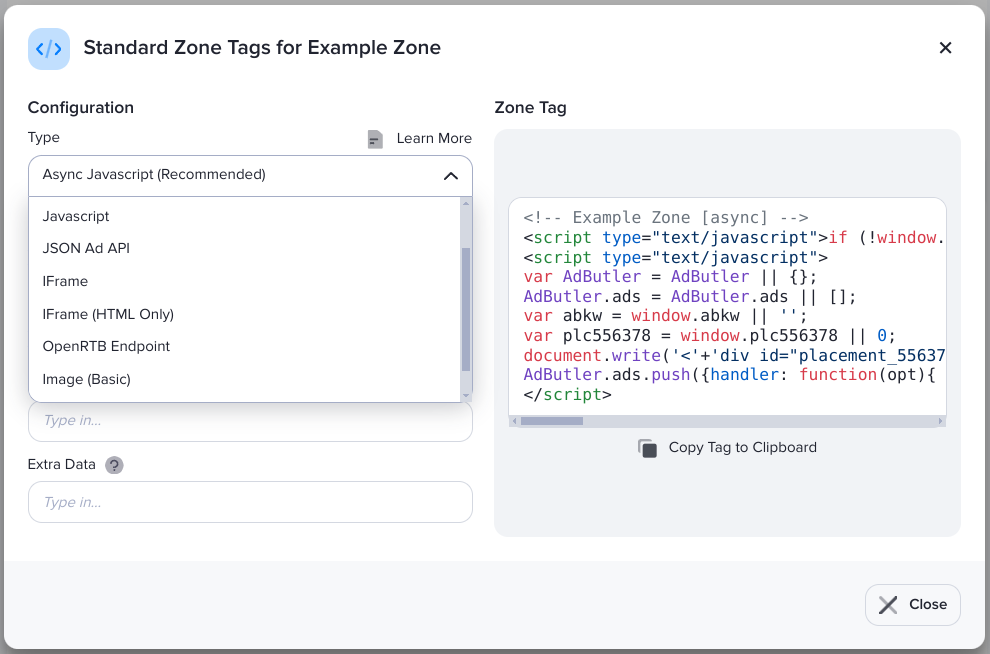Types of zone tags
A zone tag is a snippet of code that places your ad item on a publisher's webpage or app. It passes along information about the ad item, and usually other details such as ones needed to track the ad's performance.
Choosing the right type of zone tag is important because your ad item may not show or you may miss some features if you didn't use the appropriate zone tag for your needs or restrictions.

Asynchronous JavaScript (Async)
An asynchronous JavaScript tag adjusts the zone based on the file type of the incoming ad. For example, if an image-based ad is chosen, it will display inside an HTML image tag. If on the other hand a custom HTML ad item is chosen, it will render the ad in an iFrame.
document.write method to inject the ad content into a page. This method may lead to slower page load times. It can also interfere with other JavaScript libraries that may be operating on the same page. If you are experiencing problems with load times or rendering, try switching to the Asynchronous JavaScript 1.1 zone tag.Asynchronous JavaScript 1.1
Async 1.1 tags are also used to render ads asynchronously via JavaScript. However, it does not require the document.write method of drawing on the page. Instead, ads served through an Async 1.1 tag are rendered directly to the placement container DIV.
JavaScript
If you need custom HTML code served inline with the page content (ie. outside of an iFrame), or when a publisher's website causes conflicts with asynchronous JavaScript tags, you may need to use a JavaScript tag. These tags will serve properly when a zone has its size set to be responsive.
This zone tag is synchronous, meaning it will ask the webpage to wait for the ad to load before loading the rest of the page's contents. Normally this delay is so small that it doesn't affect the website visitor or app user's experience. But if a zone is set for programmatic bidding, the delay will usually be compounded, leading to a noticeable delay in loading time. We recommend using Async tags for such zones.
iFrame & iFrame (HTML Only)
These tags serve ads similarly, except the HTML-only iFrame will not run JavaScript. We recommend using these tags only when your publisher specifically asks you to do so.
iFrame tags load content securely and are unable to interact with the page it is displayed on. iFrames also load asynchronously.
Image (Basic)
This is an HTML image tag wrapped in a hyperlink tag to direct users when they click on the ad.
JSON Ad API
We recommend this zone tag only if you want to heavily customize when or how your ad is rendered because they add more steps to the process compared to other zone tags. That being said, their flexibility may be worth it for your needs.
When using a JSON Ad API tag, an ad request will return a JSON object. The JSON response contains all the base details needed to display an ad item. The JSON response will include the ID of the ad item, the destination for the click, and the location of the image, as well as the dimensions and any other settings you’ve set for the ad item and will be rendered/styled according to the HTML/CSS or JavaScript included on the page.
AMP
These tags are lightweight, easy to use, and are AMP-compliant, allowing mobile sites to load as quickly as possible. There are two cases where you'll have to modify your AMP tags before they can serve, which you can read about here.